You're not traveling through another dimension; everything described above actually happened last year in Todd's Ultimate Fantasy Football. But it certainly seemed like a trip through the Twilight Zone. The road to TUFF Bowl IX was rife with wicked curves that whipped around the realm of expectation past all believable bounds of imagination and ended in the surreal domain of disbelief. Now TUFF's 19 owners are about to embark on a new journey. There's a signpost up ahead: your next stop: the 2009 TUFF Draft Wrapup!
1.01 Tampa Bay Meat Goats — RB Knowshon Moreno  |
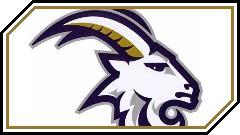 |
|
The Meat Goats went from 11-3 to 3-11 in just one year. Tom Brady's ACL tear wasn't what killed their season, though (Matt Cassel worked out fine in his absence). What did kill the Goats were a couple of weak spots in the starting lineup. In particular, the closest thing they had to a #2 running back was T.J. Duckett. Knowshon Moreno, the quicker and shiftier of this year's "Top 2" RBs, is a 180-degree turnaround at that spot. In 2007, as a redshirt freshman, he beat out two seniors (Thomas Brown and Kregg Lumpkin) to become the Bulldogs' featured back. Sigmund Bloom of draftguys.com said in a recent podcast, "(Moreno's) body is going to get stronger, faster and bigger... Chris Wells could go higher because of his gaudy measurables, but Moreno's the guy that's going to have a better career." |
1.02 Carolina Convicts — RB Chris Wells  |
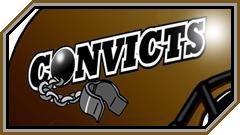 |
|
Did you know... that had the Carolina Convicts played in Week 16, their entire roster would have scored a combined total of just 30.6 points? Heck, DeAngelo Williams (among others) outscored them by himself that week. If only Carolina had put forth such a pitiful performance in Week 14, when it mattered, they would be picking first. Then again, this year, Carolina doesn't lose much at all with the #2 pick. Chris Wells presents a great combination of size and speed. People knock him for his history of injuries while in college, but Adrian Peterson (Vikings) missed more time in college than Wells did, and he's turned out just fine, thank you. According to Sporting News magazine (2/16/09, page 76), an unnamed AFC scout said, "He's going to flourish in any offense that features the running back." He hasn't done much in the way of catching the ball out of the backfield, so that's one thing he needs to work on, but the bottom line is, the Cons finally have a running back that's worth starting. |
1.03 Dallas Junglehawgs — WR Michael Crabtree |
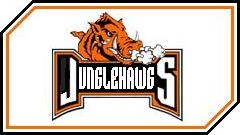 |
|
The Junglehawg roller coaster continues… from 2-12 to 12-2 (and TUFF Bowl champs) to 0-14 and now 8-6 (and TUFF S*** Bowl champs). The main reasons for their rise last year were two rookies that I didn't expect much from: RB Steve Slaton ("should make a very good third-down back") and WR Eddie Royal (I envisioned him as a slot receiver/kick returner).
Prior to the draft, I had expected the Pittsburgh BIG PAPAS to take a running back here as the two they were counting on last year (Jamal Lewis, Laurence Maroney) didn't deliver. But instead, in two big trades, Pittsburgh dealt longtime QB Peyton Manning (among others) to Denver for (among others) RB Chris Johnson, then swapped this pick and RB Jamaal Charles to Dallas for Slaton.
And with this pick, the Junglehawgs take the consensus #1 WR in this year's draft here. Believe it or not, Crabtree came to Texas Tech as a quarterback. He scored 41 touchdowns in just two years, and in the process, became the first wideout to win the Fred Biletnikoff Award twice. Mel Kiper says, "He's a big-time player who should have a Larry Fitzgerald-type career in the NFL." Even though he isn't the fastest and he comes from a pass-happy offense, Todd McShay says Crabtree more than makes up for that with instincts, shiftiness and the ability to get yards after the catch. He concludes, "I have not given a grade this high to a wide receiver since Calvin Johnson."
I know that Dallas needed help at wide receiver, and they certainly got that. But this year's draft is deep enough at that position that I would have been thrilled to take a Jeremy Maclin at #8 or a Darrius Heyward-Bey at #10. I agree that Crabtree is the best WR in the draft, but not by as great a degree as Dallas seems to think. They also had to downgrade at their #2 RB spot (from proven Steve Slaton to unknown Jamaal Charles) and that is a heck of a risk. |
1.04 Minnesota Fats — QB Matthew Stafford 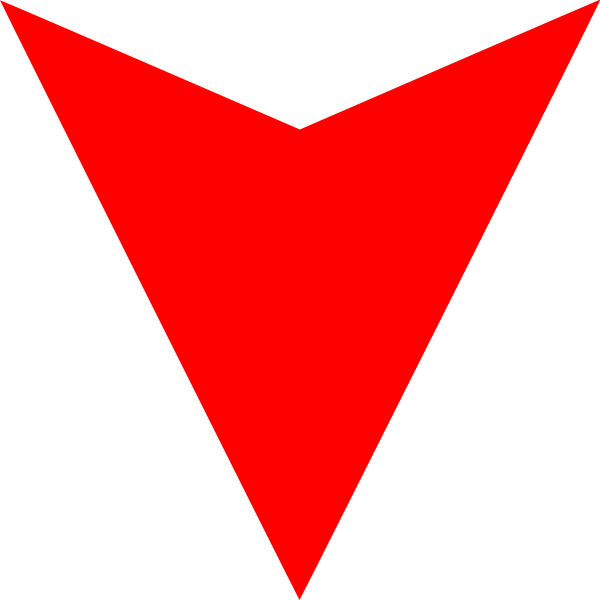 |
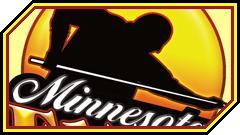 |
|
Minnesota seems like it's just a piece or two away from being a playoff contender. They started off well last year at 4-3, but then Joseph Addai got dinged up, and so did last year's first-round pick, Felix Jones. Around the same time, Edgerrin James was benched. End result: The Fats finished the year with a 7-game losing streak. In what seemed like a stroke of great fortune for Minnesota, RB Donald Brown (Addai's handcuff) fell to #4. But then the Fats threw me a bigger curveball than that one that Darth Vader threw at Luke Skywalker in 1980 ("I am your father").
Mel Kiper says, "Stafford has the great arm: He makes throws that nobody else can make in college football, and that has great value. He has gotten better with his touchdown-interception ratio and completion percentage every year at Georgia, and he didn't have a great offensive line in front of him like Bradford did. He has dealt with adversity in the pocket and dealt with pass pressure." His final game with Georgia, the Capital One Bowl against Michigan State, was another display of his inconsistency: 6-for-14 and an interception in the first half, then 3 TD passes in the final 18 minutes.
Much has been said about Stafford coming from the same high school that Bobby Layne (the last QB to lead the Lions to an NFL title) went to. I hope it's a good omen for the Lions. I don't think it'll save the Fats from regretting passing on Brown, though. Just think, last year, he could have had QB Matt Ryan but went with RB Felix Jones... I think Brown and Ryan will be way better as a duo than Jones and Stafford. |
1.05 Tennessee Taz Devils — QB Mark Sanchez |
 |
|
After sitting behind Matt Leinart in 2006 and John David Booty in 2007, Sanchez got to shine in 2008. He will have to answer the same question Leinart had, though: Did he shine because he's that damn good, or did he benefit from playing for the Pac-10's #1 recruiting machine? Most draft analysts are saying he's better than Leinart. Todd McShay votes the former, even though Sanchez started at USC for one year: "He's the most physically gifted quarterback to play at USC under coach Pete Carroll," adding that he liked him even better than Matthew Stafford (a better mix of tools, intangibles and work ethic). Cecil Lammey of draftguys.com mentions that Sanchez is notorious for intense film study. Chad Reuter of CBS NFL Draft Scout: "His arm strength and leadership abilities are better than those of Leinart."
I initially considered this a curveball because the Taz Devils need more help at wide receiver (where they have Santonio Holmes, and really not much else), but it's not like his #2 QB (Jason "Dougastalgia" Campbell) has a lot of job security. The Washington Redskins reportedly tried to shop Campbell in an effort to upgrade at QB. |
1.06 Cleveland Steamers — RB Donald Brown
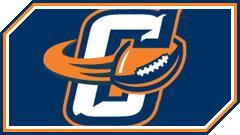 |
|
|
The Steamers have made big strides from 2006. They picked up RB Marshawn Lynch and WR Dwayne Bowe in 2007; that same year, they made Indy cough up this pick in a draft-day trade. Last year, they picked up QB Matt Ryan while unloading disappointing QB Alex Smith. Now Cleveland is making Indy pay big time by taking Brown.
In 2008, Brown wasn't just the every-down back for the UConn offense... he was the UConn offense. Their passing game sucked (4 TD, 17 INT) and yet Brown managed to run for 1,822 yards and 17 touchdowns on 338 carries. In the International Bowl, UConn ran 46 running plays to just 6 pass plays, yet still won thanks to Brown's 261 yards and a touchdown on 29 carries.
I'd like to think that Bill Polian woke up, smelled the coffee, and realized that Joseph Addai has never been durable or consistent enough to be an every-down back in the NFL. (Of course, that might be just me; I passed up Addai for DeAngelo Williams, but that's another story for another time.) The Steamers now have Marion Barber, Marshawn Lynch and Brown heading up the RB corps, and it's possible Brown could pick up some of the slack when Lynch goes on his 3-game suspension to start the season. One question, though: Can Cleveland get a solid wideout with the 20th overall pick? |
1.07 Tennessee Taz Devils — RB Shonn Greene
 |
|
|
Tennessee basically trades in one big RB for another; they dealt RB Rashard Mendenhall and WR Domenik Hixon to the San Diego Slewage on the first day of the draft for this pick. Shonn Greene came out of nowhere to have the best season of any running back in Hawkeye history, topping it off with a great Outback Bowl against South Carolina. Thing is, he's got off-field issues. He missed 2007 due to academic problems (so he only really played one full season in college), and as a result, he's also a year and a half older than most rookies (he'll be 24 in August). Because he's not very speedy, he's most likely going to be a bruiser back, suggesting that his career may not last very long (you may recall Natrone Means, who got off to a great start in his career but retired at age 28). The trade could potentially also pay dividends for San Diego (because if Willie Parker leaves the Steelers as a free agent after 2009 and Mendenhall proves he can be the starter in Pittsburgh, then the Slewage could end up with two starting RBs next year). |
1.08 Dallas Junglehawgs — RB LeSean McCoy
 |
|
|
Even if Steven Jackson turns out to be the only starting RB in Dallas this year, at least the 2010 Junglehawg backfield is looking better and better. That's because while McCoy doesn't figure to start for the Eagles this year, all he has in front of him is banged-up, 30-year-old Brian Westbrook. Todd McShay calls him "supremely talented" and projected him as a late first-rounder; he also says McCoy is a better pass-catcher than Knowshon Moreno and Chris Wells. But Tony Pauline of Sports Illustrated says, "Scouts have said McCoy is skinny up top and may not have the body type to take an every-down pounding at the next level." McShay also pointed to ball security as a possible problem; McCoy fumbled four times in the first five games of 2008 (with the opposing team recovering three), but to his credit, he cut that down to just two fumbles the rest of the way (losing one). |
1.09 Cleveland Steamers — WR Jeremy Maclin 
 |
|
|
He's got speed and a couple 1,000-yard seasons under his belt. He'd be the #1 wideout on the board in almost any other year, just not this year. The only knock on him is intermediate routes; Mike Mayock of NFL Network says, "he hasn't run the (whole) route tree" and was used primarily out of the slot.
Yes, Cleveland coughed up a 2010 #1 and its second-rounder this year to Houston to get Maclin. He still gets a greenie from me because Maclin has the potential to be in the Steamers' starting lineup. Their top 3 receivers are T.J. Houshmandzadeh, Dwayne Bowe and... Ted Ginn Jr.? I consider Maclin to be an upgrade over Ginn. Come to think of it, I thought Houston might be interested in Maclin as a replacement for Braylon Edwards (traded to Dallas last season), but Jeff Rathburn said to me, "When has an Andy Reid-drafted WR ever produced?" I was quick to retort, "I thought DeSean Jackson way exceeded my expectations last year." |
1.10 Dallas Junglehawgs — RB Gartrell Johnson
 |
|
|
ESPN's Todd McShay said of Johnson during Senior Bowl week, "Johnson ran with excellent power and balance and also has above-average quickness for his size that showed when he bounced a run outside and was able to beat the inside-out pursuit to the corner and turn his shoulders upfield."
Also, a few parallels do exist between LT2's last three seasons and the three seasons Marshall Faulk had in St. Louis prior to the Rams drafting Steven Jackson (2001-2003). Both backs saw their ypc average decline sharply from more than 5 to less than 4. Faulk had had more than 2,500 carries in his careers when the Rams drafted Jackson; Tomlinson has more than 2,600 in just eight seasons with the Chargers.
But I just don't see Johnson becoming San Diego's every-down back in the near future; maybe the "thunder" to Darren Sproles' lightning if the Chargers decide to use them in tandem, that's it. Meanwhile, the Junglehawgs passed up Darrius Heyward-Bey and Percy Harvin to further shore up their WR corps (where they have Braylon Edwards, second-year man Eddie Royal, rookie Michael Crabtree, and not much else).
|
1.11 San Diego Slewage — WR Percy Harvin 
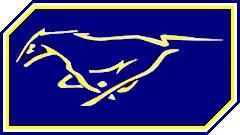 |
|
|
A heck of a pick. One of the best available players at this point, Harvin also fills a hole the Slewage have at wide receiver. And he plays for Todd Hansen's hometown Vikings, too! He's got sub-4.4 speed and a number of draft analysts (including Mel Kiper Jr.) compare him to Reggie Bush. So what's not to like about the dude? I am willing to look past his history of injuries (he had 171 total yards and a touchdown in the National Championship Game despite a fractured ankle). But what does worry me is, he tested positive for marijuana at the Combine (you don't do pot in the weeks leading up to the Combine unless you're frigging stupid), and he scored a 12 on the Wonderlic test (OK, maybe he is stupid). The Vikings did draft another guy who did pot and slipped in Round 1 due to character concerns (this dude called Randy Moss, you may have heard of him), and I hope they did the same due diligence this time around. The only other thing about Harvin: "Many of his plays in (Florida's) offense were slip screens designed to get him the ball quickly and in space," said USA Today in its scouting report. He gets the up arrow anyway because San Diego, fresh off the first losing season in franchise history, needed help at wide receiver in a bad way. |
1.12 New Orleans Chocolate City — WR Hakeem Nicks
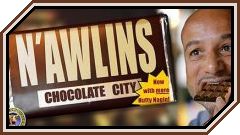 |
|
|
Nicks, taken by the New York Giants with the 29th overall pick, is neither as big as Crabtree or Kenny Britt, nor as fast as Maclin or Harvin, but he makes up for it with route-running, ball skills and after-the-catch ability. Evan Silva says T.J. Houshmandzadeh is the NFL receiver Nicks is most comparable to. "He's NFL-ready right now," says ESPN's Todd McShay. He better be ready to replace Plaxico Burress. If not, Nicks had better look over his shoulder where 6'6" Ramses Barden (the Giants' third-round pick) is lurking. |
1.13 Carolina Convicts — QB Josh Freeman
 |
|
|
At first, this picked surprised me a little bit, because the Cons could use help at wide receiver (they have Roddy White and not much else) and their next pick is at 2.09 (at which point the best wideouts available will be the ones who dropped to Round 3 in the NFL Draft). But their QB corps consists of the Cleveland Browns' QBs and a few backups, so you can't fault Jeff Hannan for addressing that position first. Freeman's size (6'5", 250 lb.), arm strength, athleticism and coordination have NFL scouts salivating. His stats (44 TDs to 34 INTs, 14-18 as a starter at Kansas State) don't. But who to compare him to? Ben Roethlisberger? JaMarcus Russell? Joe Flacco? Akili Smith (gulp)???
At first, I wasn't crazy about his decision to come out early after a brief look at his junior year stats. He completed 75% or more of his passes in each of the three games he had against non-conference creampuffs (North Texas, Montana State, Louisiana-Lafayette), but then completed 50% or fewer of his passes against four Big Twelve opponents. But as I learned the hard way in my review of RB Jerious Norwood in 2006, a quick glance doesn't tell the whole story. A deeper look reveals that K-State surrounded Freeman with subpar talent. But what really impresses me about Freeman is that he refuses to blame his supporting cast: "Those are my guys, dude... You want to blame someone, blame me." Matt Hayes of Sporting News magazine says, "He's Roethlisberger, not Russell." The question becomes, how well could he do with a better supporting cast? Carolina is really counting on Freeman to be a hit, because four of the next six picks were made by the other three NFC East teams. |
1.14 Arizona Outlaws — WR Kenny Britt 
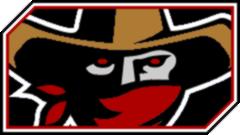 |
|
|
The Outlaws finished 7-7 because they were able to get help off the waiver wire when they needed it (QB Tyler Thigpen, WR Steve Breaston). If they hadn't gone flat against Carolina and Pittsburgh, they could have gone 9-5. They needed help at WR, an area they did not address in last year's draft (Derrick Mason is still not getting any younger; they dealt Wes Welker for Torry Holt, who had his worst season in years). And I say they got it in Britt. He's got very good size (6'3, 218) and Charles Davis (of NFL Network) also points out that he's tough, too, and doesn't mind trying to block. Also, finally, the Tennessee Titans realized what a need they have at WR, so Britt lands in a terrific job situation. |
1.15 Green Bay Ground Hogs — WR Darrius Heyward-Bey 
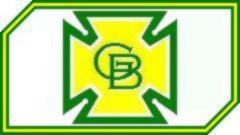 |
|
|
The Ground Hogs took the best available player here, and a lot lower than where the Oakland Raiders took him in the NFL Draft. Heyward-Bey is a very good-sized (6'3", 206 lb.), sure-handed, vertical threat with run-after-the-catch ability and big-play ability. He's a hell of an athlete; in addition to having the best 40yd time among WRs at the Scouting Combine (4.30), he had the 5th-best vertical and broad jumps. The reason he didn't have a 1,000 yard season at Maryland was that his QBs weren't very good, so production was never at issue. If there's a knock on DHB, it is this: Pat Kirwan noted on NFL.com, "Some people ... believe he's a straight-line speed player who might not love football. The fear is that he's another Troy Williamson who can go deep but isn't a complete receiver." He's unrefined as a route-runner, but hey, give him three years. Green Bay will, as they already have Anquan Boldin, Greg Jennings and Lee Evans as their starters.
|
1.16 Detroit Vipers — TE Brandon Pettigrew
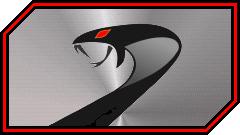 |
|
|
The Vipers were last year's Cinderella, only the limo never turned back into a pumpkin. Four months later, it's time for a "Sweet 16" (16th pick) party. Unlike the previous four drafts, I have no obvious holes to fill, so I can simply take the best available player.
"With the proliferation of the spread offense in college football, more and more college tight ends never get in the three-point stance as an inline blocker. As a result, we get a lot of one-dimensional tight ends coming into the NFL," notes NFL Network draft analyst Mike Mayock. Pettigrew is not one of them. He's better—a big, strong, complete tight end with natural athleticism, agility and strength to run after the catch. "Think Jason Witten when you think of this kid," says Mayock. I hope Mayock is right. I have Witten, one of the key components of the TUFF Bowl IX champion team, but didn't have a very good backup (Leonard Pope turned to crap last year, leaving me to resort to waiver wire pickups Desmond Clark and Jerramy Stevens).
Pettigrew needed to stay focused after a postseason arrest in January 2008 (public intoxication and battery of a police officer), and it seems he did just that. His 40 at the Combine (4.87) hurt, but hey, as I said a few years ago, the 40 isn't a pattern that receivers run in the NFL. He had no touchdowns last season, but it was hard for any Oklahoma State receiver not named Dez Bryant to score a touchdown. Bryant accounted for 19 of OK State's 25 passing TDs last year.
|
2.01 Tampa Bay Meat Goats — WR Brian Robiskie
 |
|
|
Tampa Bay needs help at wide receiver in part because James Hardy (their first-round pick a year ago) has been a bust so far. Muhsin Muhammad celebrated his 36th birthday on the day the Goats took Robiskie, and Donald Driver is getting up there in age, too. Todd McShay calls Robiskie one of the more polished wideouts available because of his route-running. On Day 2 of Senior Bowl practices, he said: "He showed precise cuts out of his stem and was able to throttle down instantly when running stop and comeback routes... At this point he appears to be the receiver who should have the easiest transition at the next level." He "has enough speed to challenge over the top and understands how to create separation from cornerbacks due to his shiftiness, strength and precise routes," according to Rob Rang of NFLDraftScout.com. I see him as a very good possession receiver, but not a #1. His NFLDraftScout.com profile agrees with me, saying that he could be "a perfect complement for a team that already has its established deep threat and is looking for someone to keep defenses honest underneath." This means Robiskie should be working alongside Braylon Edwards, not replacing him.
|
2.02 Arizona Outlaws — RB Andre Brown
 |
|
|
Todd McShay: "Brown is a decisive downhill runner who has good size, shows good burst to the hole and runs with enough forward body lean to pick up yards after contact. Though he's not the most elusive back, he catches the ball well and can contribute as a receiver out of the backfield. We now think he has a chance to come off the board early on Day 2 of the draft and that's noteworthy since he didn't put up great numbers in college." Like Rashad Jennings, both have above-average burst for their size, but both have a ways to go to become established NFL backs. He may not have speed, but his ability to hit the hole hard (and blitzers in pass protection) has opened some eyes, and he was also one of the biggest winners of Senior Bowl week (the other was TE Shawn Nelson). The big problem he had his last two years was foot injuries, which explained why he never had half or more of his team's carries in a season. Now with the Giants, he will have to compete with Ahmad Bradshaw for carries behind Brandon Jacobs. (Note 5-10-09: Denver acquired Brown and RB LenDale White from Arizona for RB Derrick Ward and a 2011 2nd-round pick.)
|
2.03 Green Bay Ground Hogs — QB Pat White
 |
|
|
The NCAA record-holder for career rushing yards by a QB, White was lights-out in last year's Meineke Car Care Bowl (26-32, 3 TDs). He can beat you with his legs as well as his arm. At 6'0", 190 lb., he's very small for a QB (never mind that Doug Flutie was smaller and that didn't stop him from succeeding in the NFL). Prior to the draft, a number of pundits suggested that the recent use of the "Wildcat" formation had given a boost to White's draft value, and son of a gun, he went to the team that introduced the Wildcat to the NFL. I like White a lot, but unless he somehow beats out Chad Henne in 2010, his fantasy production in TUFF will depend far more on how often he passes for, catches or runs for a TD, and less on completions and yardage. That makes him a risky pick this early in the draft (although I admit that I would have gladly snapped him up late in Round 2 since I have Chad Pennington).
|
2.04 Houston Tethered Swimmers — TE Jared Cook
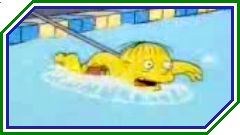 |
|
|
Cook is strictly a passing tight end at this point at 6'5", 240 lb., and as I mentioned at 1.16, college football programs are turning out a lot more of this type of tight end. Cook was underutilized by Steve Spurrier (not to mention that the Gamecocks' QBs were erratic). He had a fantastic Combine, with the fastest 40yd time of any tight end (4.50, which was faster than what Dustin Keller ran a year ago) and a vertical leap that, at 41 inches, was 5 inches more than any other tight end. He boosted his stock big time with that performance. But he has a ways to go on his blocking. Spurrier once compared him to Lions WR Calvin Johnson. He fell all the way to the 89th overall pick in the NFL Draft, but his job situation is favorable. When the Titans took Cook, their current starter, Bo Scaife, was refusing to sign his franchise tender and was boycotting team workouts; Scaife signed on the dotted line not long after they picked Cook, but now, they may be preparing to move on without him in 2010.
|
2.05 Tennessee Taz Devils — WR Brandon Tate
 |
|
|
The Taz have Santonio Holmes, and not much else, at wide receiver, and Tate was considered to be UNC's top receiver before tearing his ACL and MCL last October. If healthy, he offers explosiveness and big-play potential (he was unable to participate in the Combine). Mel Kiper said during Day 2 of the NFL Draft that had Tate not torn up his knee, he might have gone in Round 1 of the NFL Draft. Testing positive for pot at the combine is a concern, but Tate lands in New England, where you know Bill Belichick runs a tight ship. Sigmund Bloom of draftguys.com says, "I don’t see much of a difference between him and Jeremy Maclin on tape."
|
2.06 Indianapolis Hoosier Daddy's — RB Glen Coffee
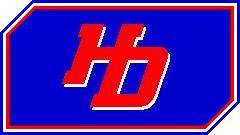 |
|
|
On paper, the Hoosier Daddy's looked like a threat to win the AFC East. Then Ocho Cinco went loco. What's more, in two separate trades, they gave up QB Chad Pennington and WR Anquan Boldin and got QB Matt Hasselbeck and WR Drew Bennett, and those trades haven't worked out well so far. Before that, they traded two #1 picks to get QB JaMarcus Russell (one of which was this year's 1.06), and he hasn't provided much of a return on that investment.
In any case, Indy does well here in taking Coffee as Frank Gore missed a few games last year. 5.9 yards per carry and 10 touchdowns in the SEC is nothing to sneeze at. I do wonder how much he owed his success to OT Andre Smith—his worst game of the season came when Smith was suspended (the Sugar Bowl vs. Utah)—but it's hard to come across stats that show how Coffee did in runs off of Smith vs. runs up the middle vs. runs off of tackles other than Smith. Besides, San Francisco's GM, Scot McCloughan, picked Gore over Vernand Morency and Ciatrick Fason in Round 3 four years ago, and that worked out a lot better than I expected.
|
2.07 San Diego Slewage — RB Rashad Jennings
 |
|
|
One of life's great mysteries is why Jennings fell all the way to Round 7 of the NFL Draft, darn near becoming "Mr. Irrelevant." If NFL teams dissed Jennings for coming from a small school, they were fools. He transferred from Pittsburgh, but he did so because he needed to be closer to home after his father became ill, not because of the usual reasons (playing time, off-field problems). That's love. Scott Wright of Draft Countdown calls him a better small school prospect than Tim Hightower was in 2008. |
2.08 Baltimore Brown Clowns — RB James Davis
 |
|
|
I remarked at some point in Round 2 that "2008 was the Year of the Running Back; 2009 is the Year of the Trade." The reason I said it was that seemingly every pick was either traded or offered for trade. It is a testament to how much smarter TUFF's owners have become—instead of taking whomever, wherever, they're jockeying for the position they need to take a given player. Baltimore got this pick, their first of the draft, from Tampa Bay in exchange for RB Correll Buckhalter.
And they spent it on RB James Davis. In my estimation, it's a selection where job situation seemed to have taken precedence over talent. Davis was drafted in Round 6 by the Cleveland Browns, over Rashad Jennings (who fell to Round 7). The Browns, who are starting a past-his-prime Jamal Lewis, should have taken Andre Brown in Round 3. Davis showed at the Senior Bowl that he doesn't do much more than take handoffs: His pass protection skills left a lot to be desired, he catches too many passes with his body and he just isn't explosive as a runner. Sigmund Bloom noted during his podcast that he either needs to get bigger or change his running style (he runs too upright and will get hurt a lot if he keeps that up). Obviously, the Brown Clowns were confident they would get a tight end they liked at 2.11 and could therefore afford to gamble here at 2.08; since they did just that, I will not slap them with a red arrow.
|
2.09 Carolina Convicts — RB Javon Ringer
 |
|
|
The run on RBs continues here. Michigan State's primary back for the last two seasons, Ringer averaged 2.9 ypc over his last four games as a Spartan; it could be chalked up to his heavy workload last year (390 carries and no bruiser back around to take the short-yardage carries away the way Jehuu Caulcrick did in 2007). He had his knee scoped after the season, so he was not able to participate in the Senior Bowl. He was able to boost his draft stock back up at his Pro Day (he ran a 4.42 40-yard dash and his 3-cone shuttle time was excellent as well), but Sigmund Bloom still calls him a not-as-fast, not-as-sudden version of Tashard Choice who will make you pine for a bigger, faster, stronger back down the road.
I have mixed feelings about this pick; on the one hand, Ringer's job situation may be good in that LenDale White could leave as a free agent after 2009, Chris Johnson could get hurt, and you know the Titans won't overuse him the way MSU did. But seeing as Carolina traded away their pick in Round 3, I would have just as soon taken Juaquin Iglesias, who (worst case) could be the Bears' slot receiver this year, to fill the need Carolina has in that area, rather than a smallish guy (5'8", 200 lb.) who has yet to prove he can take the pounding that running backs take in the NFL.
|
2.10 Tennessee Taz Devils — WR Juaquin Iglesias 
 |
|
|
Oklahoma's top receiving threat in '08 after playing second fiddle to Malcolm Kelly in '07, Iglesias is more likely to be a possession or slot receiver. Doug Farrar of Football Outsiders said during a chat on ESPN.com, "Iglesias is that reliable slot receiver who will be a quarterback's best friend." He might be the Bears' best receiver right now (considering that Devin Hester is still in the developing stages as a receiver; also, don't read too much into Earl Bennett and Jay Cutler coming from the same college because Bennett left Vanderbilt two years after Cutler did, so you figure Cutler's rapport with Bennett can't be much better now than it is with the other Bear receivers).
|
2.11 Baltimore Brown Clowns — TE Chase Coffman
 |
|
|
Pretty much the only question mark in the potent Brown Clowns offense is tight end. Nobody knows which Visanthe Shiancoe will show up—the near-cult hero of Week 16 or the jabroni who only contributes a couple points. Chase Coffman, the son of three-time Pro Bowl TE tight end Paul Coffman, considered coming out a year early. He was productive all four years in college despite having to share playing time with Martin Rucker for three of those years. Durability is a concern after dealing with foot and turf toe injuries over the last two seasons. He may sit behind Ben Utecht for now to let those injuries fully heal, but if Utecht puts forth the same crappy production in 2009 that he did in 2008, Coffman could take over sooner rather than later. And where the Brown Clowns are concerned, Alge Crumpler might as well clean out his locker.
|
2.12 New Orleans Chocolate City — RB Bernard Scott
 |
|
|
New Orleans dealt with a few injuries at running back in 2008 ("Lucky Number" Selvin Young, Reggie Bush, and just when it seemed they had a find in Peyton Hillis, he went down, too). Then came news that Bush had microfracture surgery on his left knee—the third surgery on that knee in two years. That's a very bad sign for a player that relies so much on cutting ability and speed, not to mention that New Orleans had to cough up a top WR (Brandon Marshall) to get him.
So now we come to Bernard Scott, who I've heard is very talented... but only on the field. He's been to four colleges, been arrested five times, and is 25 years old already. Cecil Lammey and Sigmund Bloom of draftguys.com have made a big deal about his on-field attributes, and hoped he could land on a team that would put him on a short leash (Steelers, Patriots, Colts). Thing is, he landed in the exact opposite situation—Cincinnati, where they apparently don't give a crap about character after bringing in RB Cedric Benson and DT Tank Johnson and even bringing back WR Chris Henry. I don't know when his last arrest was, so it's possible he's been trouble-free for two years; regardless, I lean towards the "once a punk, always a punk" school of thought (remember Lawrence Phillips). Here's an article that discusses his troubles in more detail. If he continues to make bad decisions and lose his temper, then like Phillips (who is currently rotting in jail for hitting 3 people with his car and is about to go on trial for eight unrelated felony counts) he won't be long for the professional football world.
|
2.13 New Orleans Chocolate City — TE Shawn Nelson
 |
|
|
Todd McShay during Senior Bowl week: "He looks like a Dallas Clark-type prospect who can create a lot of schematic problems for an NFL defense if he ends up with a creative and innovative offensive coordinator at the next level." (Get used to hearing Clark's name a few more times -Ed.) "Nelson is a seam-stretching presence who is capable of plucking the ball outside his frame and presents a big target area for his quarterback. He covers a lot of ground and can run past linebackers in man coverage. More surprising, however, has been Nelson's effectiveness as a blocker—particularly in pass pro. His lateral agility and ability to recover were on full display during the one-on-one drills. He also was able to drop his hips and handle the bull rush from the linebackers off the edge." Mike Mayock sees Nelson as being able to add 12-15 pounds of muscle to his frame without losing any speed and being a tight end who can block as well as be a vertical threat. Mayock and former NFL TE and head coach Mike Tice have both called Nelson "a willing blocker." Nelson should give the Chocolate City the depth they need at that position after L.J. Smith fell off a cliff last year, and I believe he will beat out Derek Fine to be the Bills' starting tight end.
|
2.14 Detroit Vipers — RB Mike Goodson
 |
|
|
The Carolina Panthers took him in Round 4, and I have to think they're planning for if DeAngelo Williams leaves for greener (as in $$$) pastures after 2010. Goodson was injured for most of 2008, and his college career went backwards due to academic troubles and clashes with his coaching staff as well as injuries. Despite all that, Mike Mayock ranked the 2006 Big Twelve Freshman of the Year #5 on his list of RBs, ahead of Shonn Greene. He's creative and speedy with an extra gear, like Reggie Bush, but is he coachable? Or will he continue to display the immaturity he displayed at Texas A&M? He figures to be a "change of pace" back at this point, but could become the "dash" to Jonathan Stewart's "smash" in their "smash and dash" attack. Sigmund Bloom suggests he could take on a similar role to Jerious Norwood and Leon Washington.
|
2.15 Detroit Vipers — WR Ramses Barden
 |
|
|
He's got tools (6'6" height, 227 lb., strong and physical, good leaper, mad ball adjustment skills), and scored 36 TDs over his final two seasons, but played against Div. I-AA teams, breaking a couple of Jerry Rice's records in that division. Keenan Singleton of CollegeFootballNews.com points out that he had trouble with his release at the line of scrimmage – an issue that a lot of big receivers have to correct when they get to the pros. But his speed sure is impressive for a guy his size—he ran 40 times of 4.51 and 4.55 at his Pro Day. What's more, he scored 18 TDs last year despite the fact that Cal Poly ran a lot more than they threw (for example, in the game against Wisconsin, they had 59 running plays and just 16 pass plays). Can he be Vincent Jackson, Part II? By drafting Hakeem Nicks and Barden, the Giants have shown a commitment to getting the passing game going again; that part of the offense faltered after Plaxico Burress shot himself (Domenik Hixon picked up some of the slack, but Steve Smith and Mario Manningham didn't step up).
|
2.16 Detroit Vipers — FB/RB Frank "The Tank" Summers
 |
|
|
A high-risk pick, I'll admit it. But it's too early to take any of the available QBs and I just wasn't about to take yet another wide receiver when I just drafted Barden and signed Dwayne Jarrett and Chansi Stuckey. Summers has surprising speed for a guy with a no-neck fullback build (5'9", 241 lb.). At his Pro Day, he put up a 4.55 40, and 30 reps on the bench press (more than any back did at the Combine). Originally from Cal, he transferred to a junior college before playing 2007-08 at UNLV. I know the Slewage would have liked to have added him to his stable of Steeler running backs, but I can see Summers as their short-yardage/goal line specialist, and so does the Pittsburgh Post-Gazette. If this turns out to be a wasted pick (like Jerome Felton, another FB/RB was at this spot a year ago), oh well, I'll live. Four months from now, everyone has to cut 4 players and taxi 2 others. Besides, I don't pick again until 4.16.
|
3.01 Tampa Bay Meat Goats — TE Cornelius Ingram
 |
|
|
Tampa Bay needed a backup for Antonio Gates, and hopes Ingram will beat out Philadelphia Eagles teammate Brent Celek to be that guy. 2008 was a largely wasted season due for Ingram because he tore an ACL last August. Before that injury, Ingram ranked as one of the best senior tight ends. He may come from a similar mold to Vernon Davis and Dallas Clark. "Runs like a basketball player, tremendous speed and athletic ability," Mike Mayock of NFL Network says in this video.
|
3.02 Green Bay Ground Hogs — RB Cedric Peerman
 |
|
|
Peerman emerged on first day of Senior Bowl practice, making crisp cuts on Day 1 in Mobile and showing better-than-expected burst through the hole. But he has Ray Rice in front of him and the Ravens invested a much higher pick on him (Round 2 last year), so he seems like additional depth at this point.
|
3.03 Pittsburgh BIG PAPAS — RB Jeremiah Johnson
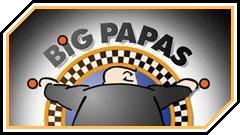 |
|
|
Johnson is the first undrafted free agent to be taken here; in this case, the BIG PAPAS take him to handcuff to Steve Slaton. Johnson is small and has had injuries (dislocated shoulder last year, ACL in 2007). He needs to adjust to pro-style offense after playing out of the spread; yes, Jonathan Stewart made the same adjustment successfully, but he was a north-south runner to begin with, whereas Johnson tends to dance or bounce to the outside (I wonder if a whole generation of running backs taught themselves to do that after watching Barry Sanders on TV when they were kids). Johnson could do well as a 3rd-down back if his NFL team can get him the ball in space.
|
3.04 Green Bay Ground Hogs — QB Nate Davis
 |
|
|
Green Bay takes another stab at getting a backup for Aaron Rodgers. Davis put Ball State on the college football map in 2008 with 66.9% completions, 26 TD, 7 INT. Wait... those were the stats he had going into the GMAC Bowl. He had a dreadful game against Tulsa in that game (9/29, 145 yds, 1 INT). I thought after that game that he would have stayed for his senior year, so it surprised me that he didn't. Davis can improvise and he can run (in 2008, he averaged 4.7 YPC rushing and ran for five scores). The bottom line, though, is that he'll need more time than most QBs to digest his team's playbook. He also dyslexia (confirmed by 49ers head coach Mike Singletary), which is why he needed a year and a half to learn the playbook at Ball State. He may have ball security issues as well, fumbling eight times in his last two games. Scouts, Inc.'s reputation with me is riding on this guy; their grade on him plummeted from 75 to 54 between the Combine and draft weekend, which is why (despite my own long-term QB depth issues) I decided to pass on him.
|
3.05 Dallas Junglehawgs — TE James Casey
 |
|
|
Hybrid tight end, slot receiver, h-back? Casey was an all-around weapon at Rice in 2008, playing seven different positions, catching 13 TDs, rushing for 6 and passing for 2 more. He declared early due to his age (24; he spent four years playing minor league baseball in the Chicago White Sox system) as much as his 2008 performance. A number of tight ends in this year's draft have been compared to (gulp) Dallas Clark; John McClain of the Houston Chronicle drops that name again here in an article about Casey's overcoming family tragedy. He went to the Houston Texans, and while they already have Owen Daniels at tight end, they plan to use Casey at multiple positions until he develops as a blocker.
|
3.06 Indianapolis Hoosier Daddy's — WR Austin Collie
 |
|
|
Collis is yet another guy who left early because of age (he spent 2005 and 2006 on a Mormon mission). But give him credit—he didn't go rusty despite being away from college football for two years. Collie led the country in total receiving yards (1,538) and receiving yards per game (118.31) last season. Todd McShay, the director of college football scouting for Scouts Inc., said Collie has good hands and good route-running ability. On top of all that, he lands in the same great situation that Anthony Gonzalez landed in two years ago. Gonzalez became Indy's #3 wideout as a rookie; now with Marvin Harrison gone and Gonzalez promoted to the #2 spot, Collie will become the #3, and as I said two years ago, the #3 wideout in Indy can be more productive than some teams' #2's.
|
3.07 Dallas Junglehawgs — QB Stephen McGee
 |
|
|
One of the Junglehawgs' priorities was looking for a long-term replacement for Kurt Warner. Might as well go with McGee—you never know when some mid-round prospect will get his chance and become a starter. A highly recruited prospect from Texas (where else?), McGee's career did not go as expected for multiple reasons. Last fall, a shoulder injury hampered him. But during Senior Bowl week he proved he belonged in the pros with his arm strength, mobility and accuracy.
|
3.08 Arizona Outlaws — WR Mike Thomas
 |
|
|
Small at 5'8", 187 lb., but you have to like his new job situation with the Jaguars, who have 33-year-old Torry Holt, backup Dennis Northcutt, and not much else. The guys at footballguys.com love him; all but one had him in their top 30 rookie lists. Sigmund Bloom, one of the writers at that site and its sister site, draftguys.com, says, "He'll probably start out as a slot receiver, but I think his team will find it hard to get him off the field."
|
3.09 Minnesota Fats — WR Johnny Knox
 |
|
|
This speedster could challenge for the slot receiver job in Chicago (assuming Devin Hester and Juaquin Iglesias are the top two). Knox ran a 4.34 40 at the Combine. He played at a lower level in college due to academic problems, which initially would worry me (with respect to whether he can to digest an NFL playbook), except that RB Derrick Ward was in a similar situation five years ago and managed to overcome that.
|
3.10 Houston Tethered Swimmers — WR Brooks Foster
 |
|
|
Brooks Foster was North Carolina's #3 wide receiver and didn't produce a whole lot, even when teammate Brandon Tate went down with the torn ACL. He's considered raw because, while he's got 4.45 speed, he needs to improve in such areas as route-running, strength and physicality (as his Draft Countdown profile points out). In other words... meh.
|
3.11 Indianapolis Hoosier Daddy's — PK Graham Gano
 |
|
|
Last season with Florida State, Gano was 24-for-26 on field goals (including 5-for-7 from 50 yards or more). It was the only year Gano kicked for the Seminoles, so it is unknown at this point if he can keep up that level of performance. He signed with the Baltimore Ravens as an undrafted free agent and will compete with Steven Hauschka for the vacant placekicker job over there, and as it happens, Indy owned the Ravens' previous kicker, 41-year-old Matt Stover.
|
3.12 Arizona Outlaws — WR Mohamed Massaquoi
 |
|
|
Massaquoi is a good value considering he went in Round 2 of the NFL Draft, but I think I know why he fell this far: He's a possession receiver who doesn't have a whole lot of upside. Massaquoi had a far more productive season as a senior than in his previous three seasons, and I would argue that it's because freshman A.J. Green was there to draw double-coverage so he got open more often, similar to what happened at Ohio State in 2003 (when freshman Santonio Holmes did the same for senior Michael Jenkins, and Jenkins looked good enough to go in Round 1 of the 2004 NFL Draft). Massaquoi should buy A.J. Green a pair of Isotoner gloves every year for life.
|
3.13 Minnesota Fats — RB Javarris Williams
 |
|
|
Williams was taken in Round 7 by Kansas City. His job situation will change for the better if Kansas City cuts Larry Johnson. Even if they don't, you have to figure that Johnson may not be the same back now that he was in 2005 and 2006 (he ran the ball a whopping 416 times in 2006 and will turn 30 in November), so Williams may get some touches along with 2008 draftee Jamaal Charles and third-year man Kolby Smith.
|
3.14 Baltimore Brown Clowns — WR Derrick Williams
 |
|
|
I hated when the Lions made this pick. Sure, Williams has speed and athleticism. But if he's so darn good, how come he was 3rd on the Nittany Lions in receiving last year (despite the upgrade at QB from Anthony Morelli to Daryll Clark)? Well, here's one reason: He's got the dropsies. Just Google derrick williams drops passes sometime. Do you know who that reminds me of? Bryant Johnson, another Penn State product (and now, also another Detroit Lion) on whom I wasted a late first-round pick (1.14, 2003) and whom the Lions should never have signed. OK, he can return kicks, but gosh almighty, doesn't anyone listen when I say you can get an undrafted free agent or a CFL player for that? At this point in the draft, it's no big loss for Baltimore, but I wish the Lions would have taken Jarrett Dillard instead.
|
3.15 Houston Tethered Swimmers — WR Louis Murphy
 |
|
|
Jeff Rathburn is no stranger to picking Florida wide receivers (in 2006, he took Chad Jackson in Round 1). And he made a point when I mentioned at that time how they haven't been successful in the NFL as of late; he said:
I don't care where people went to school. That's like saying the Pistons should never draft a European again because Darko sucked. What does where Taylor Jacobs went to school have to do with Chad Jackson? They are 2 different people! That being said, the WR you mentioned was part of Spurrier's smurf corps. Jackson was not a part of that regime. (5/21/2006, 8:30am)
Point taken, even if the wideouts of Urban Meyer era haven't had much success yet. There's a chance that Murphy may actually be more successful in the NFL than he was at Florida. People didn't get to see much of Murphy's great blend of size and speed. Why is that? With Tim Tebow and Percy Harvin on the roster, the Gators ran plenty of "gadget" plays and didn't go deep so much. Besides, the Raiders need all the help they can get at wideout. Their leading receivers last year were not wide receivers; they were RB Darren McFadden and tight end Zach Miller.
But Russ Lande of Sporting News magazine says he may not help right away: "His route-running, blocking and pass-catching ability must improve if he's going to be considered for a starting role." In other words, give him a couple years. |
3.16 Houston Tethered Swimmers — RB LaRod Stephens-Howling
 |
|
|
The Arizona Cardinals took him in Round 7 when he wasn't even on my board, and he wasn't on a number of other boards (Scouts, Inc. had no scouting report on him, and Draft Countdown didn't have him on their RB rankings, either). The main reason he didn't produce much in the last two years at Pittsburgh is that LeSean McCoy earned his carries and they had to come at the expense of guys like Stephens-Howling. At 5'7", 180 lb., he'll probably be just a kick returner.
|
4.01 Arizona Outlaws — TE Travis Beckum 
 |
|
|
Beckum is a very good value here, despite the durability concerns. He fell to the 100th pick in the NFL Draft only because he missed second half of 2008 with a broken fibula. Earlier that year, he had missed spring practice due to shoulder surgery, then had to deal with nagging hamstring pain. But the two seasons before that, he was one of the most productive tight ends in all of college football (with a total of 1,885 yards and 11 TDs). He has two things in common with (gulp) Dallas Clark: Both played at Big Ten colleges and were converted to tight end from linebacker.
|
4.02 Carolina Convicts — WR Jarett Dillard 
 |
|
|
I criticized Carolina for passing up Juaquin Iglesias at 2.09. Getting Dillard helps make up for that. Dillard stood out at East-West Shrine Game practices, and Chad Reuter of NFLDraftScout.com said back then, "His routes are so crisp that it looks like he practices using a T-square." Why is this important? Because a year ago, Eddie Royal had a great Senior Bowl week and I discounted it, thinking that he still wouldn't amount to much more than a kick returner and that guys like Mario Manningham and Andre Caldwell would be better picks. Also, Dillard can leap like nobody's business to overcome his lack of height (5'10"); his 42.5-inch vertical leap at the Combine led all wideouts.
|
4.03 Pittsburgh BIG PAPAS — WR Patrick Turner
 |
|
|
Considered an underachiever through most of his career, the light bulb seemed to come on for Turner in 2008. His 6-foot-5, 220-pound frame is enticing for scouts, but he looks quicker now and has good enough hands to warrant a mid-round selection, which no one expected entering last fall. Question is, will the light stay on? He was never the #1 receiver at USC; last year, sophomore Damian Williams emerged as the Trojans' go-to guy.
|
4.04 Minnesota Fats — RB Aaron Brown
 |
|
|
Plusses: Speed, shiftiness, vision, instincts. Minuses: Lower body strength, built more like a wide receiver. The scouting reports I've read (including this one and this one) say he's more likely to be a kick returner and/or a change-of-pace back. I was surprised Ken Mach didn't opt for Rhett Bomar (because sooner or later, the Giants are going to find a better backup for Eli Manning than David Carr)
|
4.05 Tennessee Taz Devils — WR Mike Wallace
 |
|
|
Another prospect who's more likely to be a return man, Wallace slipped under my radar last year because he didn't put up eye-popping numbers in college. Then he got himself on the map with one of the fastest 40 times among this year's wide receivers. But as far as starting at wide receiver in the near future, this Draft Countdown profile says there's not much of a chance there, and I agree.
|
4.06 Indianapolis Hoosier Daddy's — WR Deon Butler 
 |
|
|
Butler, Penn State's leading receiver last year, is speedy (his 4.38 40 time was the fourth-fastest among wide receivers) and he could be Seattle's slot receiver this year. He has been compared to Bobby Engram, another Penn State product who flourished with the Seahawks. Right now, he's behind T.J. Houshmandzadeh and Deion Branch, and I figure the #3 wide receiver job is up for grabs between Butler and Nate Burleson (who's coming off a knee injury). I gotta hand it to Indy—they needed help at wide receiver, and it's possible they may have gotten it without reaching for it with Austin Collie (3.06) and this pick.
|
4.07 San Diego Slewage — RB Ian Johnson
 |
|
|
At first, this looks like just another Viking homer pick. And he could be just a "product of the system": Steve Muench of Scouts, Inc. said, "Boise State's spread scheme and the vertical seams it created for Johnson likely inflated his production. Perhaps more importantly, the speedy defenses of Oregon (regular season) and TCU (in the Poinsettia Bowl) appeared to expose his lack of elite quickness and power." But his job situation is interesting. Supposing he makes the Vikings' roster this year, he could become Adrian Peterson's backup next year (because current backup Chester Taylor becomes a free agent after this season, at which time he'll be 30). No matter what happens, Johnson will forever be known for the 2007 Fiesta Bowl game where his Boise State Broncos upset the Oklahoma Sooners, with him scoring the game-winning 2-point conversion in overtime, then proposing to his girlfriend cheerleader.
|
4.08 Arizona Outlaws — QB Tom Brandstater
 |
|
|
During the course of the draft, Arizona was finally able to get a backup for Carson Palmer by acquiring the Tennessee Titans' QBs (Kerry Collins and Vince Young) from Tampa Bay. So now the Zammer can afford to add a developmental QB prospect here. Brandstater's definitely got the size at 6'5", 225 lb. but isn't accurate with deep throws and isn't consistently accurate to begin with. His completion percentages in 2008 ranged from 79% (against Toledo) to a pitiful 28% (against San Jose State).
|
4.09 Houston Tethered Swimmers — PK Ryan Succop
 |
|
|
This is the very first time that "Mr. Irrelevant" of the NFL Draft was selected in the TUFF Draft. I might have taken him at 4.16, but no biggie. It's not like the Chiefs offense is all that great—in weeks 2, 5 and 17 last year, Chiefs kickers put up a grand total of zero points. Succop has one edge over incumbent Connor Barth—he was drafted by the Chiefs' new regime; Barth was signed during the final season of the Herman Edwards era. Don't know why KC picked him, don't know why the Tethered Swimmers picked him. But like I said, no problem. According to this interview, Barth would rather be kicking in Denver anyway, Heaven knows Matt Prater sucks (Prater made only 12 of his last 20 FG attempts, and either Barth or Brandon Coutu should have his job).
|
4.10 Indianapolis Hoosier Daddy's — RB Kory Sheets
 |
|
|
I've heard a few draft analysts say that undrafted free agent Sheets may actually be better than the back the 49ers did draft (Glen Coffee, also taken by Indy in Round 2 of this draft).
|
4.11 Dallas Junglehawgs — RB Chris Ogbonnaya
 |
|
|
The St. Louis Rams took Ogbonnaya (pronounced O-buh-NIGH-yuh) in Round 7—ahead of Rashad Jennings, no less—and I didn't think much of him at the time because he didn't product much in college. But on Thursday, May 7, as Round 4 of the TUFF Draft was in progress, the Rams dealt FB/RB Brian Leonard to the Cincinnati Bengals. This trade may have improved Ogbonnaya's job outlook. The other guys in front of him right now are Antonio Pittman (3.7ypc and 0 TDs in 2 years) and Kenneth Darby (who should be a third-down back). Both his upside and downside are unknown for two reasons: One, having come to Texas as a wide receiver, then moved to fullback and finally running back, it stands to reason that he is still learning the running back position; two, although he had a couple of standout games last year (127 yards on 15 carries against Oklahoma; 65 yards and 2 TDs on 13 carries against Missouri), you have to remember that Big 12 schools are not known for having terribly good defenses. I learned that the hard way with Vernand Morency—he racked up what looked like a string of impressive games in his final year at Oklahoma State, and where is he now? Probably back home at Miami Subs Pizza and Grill, making fries...
|
4.12 Dallas Junglehawgs — RB Tyrell Sutton
 |
|
|
Sutton went to Northwestern, and he's relatively short (5'8") and slow (4.68 40 at the Combine). "He's very good at gaining yardage after contact for a back; known as an open-field, spread system, zone runner. If he stays healthy, he'll contribute as a change of pace back," says Paul Rush of the Green Bay Ground Hogs. I don't think Sutton will be the first Northwestern RB to make a significant contribution to fantasy football, though.
|
4.13 Green Bay Ground Hogs — RB Josh Vaughan
 |
|
|
Vaughn comes from Richmond, the same school that brought you Tim Hightower a year ago, and is said to be similar in size and running style. Cecil Lammey (draftguys.com) mentions him here.
|
4.14 Baltimore Brown Clowns — WR Kenny McKinley 
 |
|
|
It's possible that Josh McDaniels (ex-Patriots offensive coordinator, now the Broncos' head coach) sees some Wes Welker in McKinley. Brandon Marshall, Eddie Royal and Brandon Stokley are ahead of McKinley right now, but Marshall is entering the final year of his contract and the Broncos won't extend that contract following a disorderly conduct arrest in March, so it's possible McKinley could be at least the #3 Denver wideout in 2010. During his time at South Carolina, he broke most of Sterling Sharpe’s receiving records.
|
4.15 Denver Devils — QB Curtis Painter
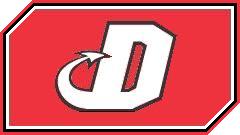 |
|
|
Denver finally joins this year's draft after trading away every other pick they had. A year ago, Painter was one of the top quarterback prospects after a 2007 season in which he threw for 3,848 yards and 29 TDs against just 11 INTs. But 2008 was a tale of two Painters—the one who completed 56% of his passes and threw 10 INTs and 4 TDs in a seven-game stretch before getting benched, and the one who completed 74% of his passes with 7 for TDs and only one INT after he got his starting job back. He struggled with consistency and he has struggled in high-pressure big game situations (hopefully Peyton Manning can help him out there), but he's definitely got more upside than the Colts' current backup QB, Jim Sorgi. This was a handcuff pick for the Devils after they acquired Manning and Sorgi in that aforementioned blockbuster trade with the Pittsburgh BIG PAPAS.
|
4.16 Detroit Vipers — QB Rhett Bomar
 |
|
|
Bomar started as a redshirt freshman at Oklahoma in 2005 but got kicked out of that program the next year after an investigation revealed that he and another Sooner took pay for work they didn't actually do at a Norman, Okla. car dealership. A number of pundits call him the best senior QB available... but let's not forget, the senior class is extremely weak at QB this year. He has two red flags: Accuracy (he completed 56.2% last year despite playing against a lower level of competition; most successful NFL QBs complete at least 60% of their passes in college); then there are character issues (the car dealership thing plus a couple citations for being a minor in possession of alcohol). He'll compete against Andre Woodson to be the third-string QB for the Giants this year; beyond that, supposing he does knock off Woodson, David Carr is only on a one-year contract. And from my perspective, Drew Stanton is on an even shorter leash (still a "developmental prospect" after two years, according to Lions GM Martin Mayhew).
|

















































